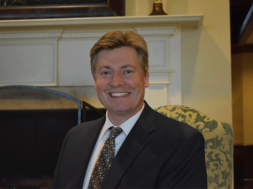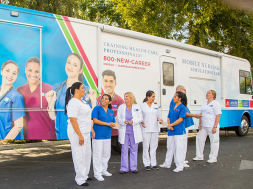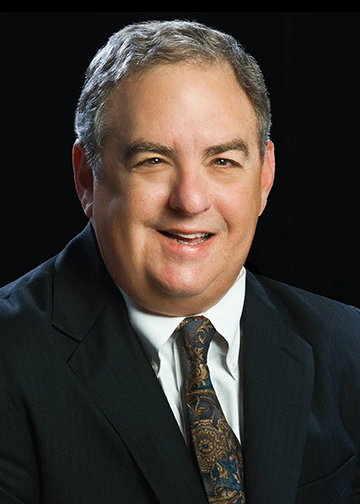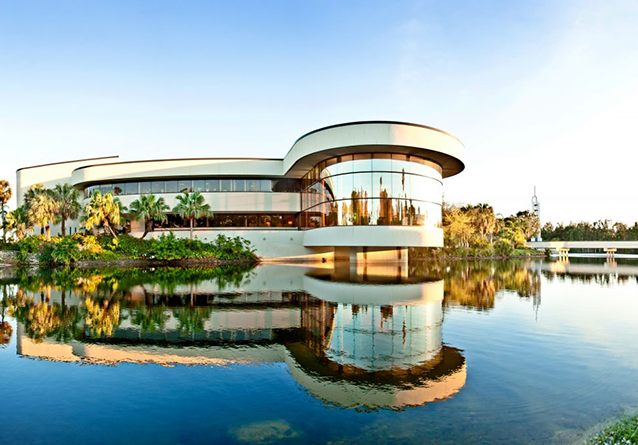
Keiser: Career Schools Should be Proud of Their History
Foundation of Higher Education Came From Individuals who Started Schools to Meet Workforce Needs
Written by Barbara A. Schmitz from an interview with Dr. Arthur Keiser, Chancellor and CEO, Keiser University
American proprietary education has a long history that has served America well before public education took hold and is now being funded, says the chancellor and CEO at Keiser University.
Arthur Keiser, Ph.D. says public universities didn’t exist until 1785, and both the University of North Carolina and the University of Georgia consider themselves the first. “Up until this time, America was served by private institutions, many of which were founded by individuals who made it a business for themselves,” he said.. “It wasn’t until the 1920s that you had your first public vocational schools. It wasn’t until later that you had your first community colleges.”
Starting his private college more than 40 years ago, Keiser spoke on the past, present and future of career colleges at the California Association of Private Postsecondary Schools conference in October.
Keiser said the career education sector should be proud of and remember its history because the foundation of American higher education came from individuals who started educational institutions to meet an economic need or to create legacies for themselves in their chosen profession.
That history goes back hundreds of years. For instance, Harvard University was started in the 1630s by people seeing a need to train clergy for the new commonwealth, he said. In 1748, Benjamin Franklin and others organized the Franklin Academy, which later became the University of Pennsylvania, in part to teach people the printing trade.
While the concept of for-profit and non-profit didn’t exist until after the U.S. established an income tax, some proprietary schools evolved because of the times and the situation. During the Civil War, for instance, women worked in commerce, business and accounting, replacing men who had gone off to war. “Schools like Bryant & Stratton, which still exist today, were formed, in part, to train women specifically for the workforce,” Keiser said, “to meet that incredibly important need that was given up by the soldiers going to war.”
It was the same situation during the two World Wars. “In World War II, institutions like Hallmark and Spartan were critical aviation schools that provided (training for the) American military – both the flyers as well as the support personnel – to repair and maintain the aircraft that were so vital,” Keiser said. “When the troops came home, there was a huge need to train and to educate our veterans who went off to war at 17, 18, 19 or 20. They came back and found themselves without skills and professions.”
With that need came opportunities. Keiser said there was a huge growth of proprietary schools in the post-World War II boom. “A lot of it was fueled by the GI Bill, which provided funding for students and gave students the ability to go to private institutions,” he said. Those institutions, in turn, trained America’s workforce and met the needs of the GIs coming back from Europe and Asia.
Up until World War II, higher education in the traditional sense really served only the elite. “It didn’t serve the average worker … whose job was to support a family and learn a trade and … skill.”
The economy and post-World War II cycles
For-profit schools often find it easier to expand. “When private entrepreneurs, private business people, see the opportunity to expand, they do that,” Keiser said. “They use their private capital. They invest in new buildings. They invest in new equipment. They invest in new faculty and staff. They do that to meet the market demand.”
In the boom and bust cycles, when the demand increases and proprietary schools grow, those schools tend to make significant revenue because they service a population that needs to be served and is recognized by the government as being important to serve. “Because of our elasticity, we grow during the negative cycles,” Keiser explained. “When the cycles turn down, and when there is an increased demand for workers and an increased demand for training, we go in and we fill the market.”
In the 2008 recession, career schools grew and took a higher percentage of available aid, whether it was federal or state, he said.
“Public institutions are limited because when the economy is bad, tax revenues decrease and their budgets get tighter. Even though the demand for their services is higher, they have less money to spend and they contract.”
It’s the same story for non-profits, Keiser said. “The only difference is that the non-profit institutions tend to fix their population model. They tend to raise tuition, and they have higher application numbers and they take a ‘better student.’ But they don’t increase the number of students enrolled in their institutions. It’s at the proprietary schools where the greatest growth is.”
Keiser has identified five cycles in the post-World War II world. The first was during the GI boom, when a number of schools entered the market to train GIs. “The growth was dramatic, and as some would say, uncontrolled, and that’s where you had the beginning of the regulations, one of which is called 85/15.”
The second cycle occurred during a recession in the late 1960s. “Again, the schools grew,” he said. “This was the beginning of chain schools. This was the beginning of students getting involved in the Higher Education Act funding, another set of regulations designed to restrict the for-profit sector.”
Third, was an economic contraction that occurred at the end of the 70s. “You had high interest rates. Job availability was weak and schools grew,” he said. “Again, you saw regulations and restrictions on schools’ access to student loans.”
The fourth cycle during the 1980s included the separation of trade associations and accrediting commissions, and all kinds of regulations in the Higher Education Act of 92. The fifth cycle came during the Great Recession of 2008-10. “We had the growth of the institutions and dollars taken from the federal aid programs,” Keiser said. It was the beginning of the Obama regulations, which have lasted until today.
The other big challenge the industry faces is the long recovery. “Right now, we are in one of the hottest economic markets,” Keiser said. “If you combine the Obama regulations, which have made it very difficult to operate, and a tough student market where students don’t need to go to school to get jobs and to find employment, it’s the worst-case scenario for the institutions. We have lost significant strength in our sector just by the numbers of schools and numbers of leaders who have left the sector.”
Continual attacks on the sector have also been difficult, but Keiser hopes that the sector has learned a few things. “One, is that publicly traded institutions are not particularly suitable for the educational market,” he said. “Very few of them have survived. The focus on economic gains versus the student-centered education has had a rough road, and consequently I think you’ll see less of the capital markets entering into the sector.”
But schools also need to be better organized as they were in the late 80s and early 90s. “I think because the publicly traded companies were more focused on Wall Street issues versus Washington issues, we were less able to defend ourselves,” Keiser said. “Going forward, hopefully, the school folks who have survived will be able to focus on the fact that we do serve the government, we do serve the public, and we have to serve it correctly. We have to serve it with integrity, and we have to be smart about the role government plays in our businesses. (We must) be prepared to invest in ensuring the government understands the work that we do and how effective we can be.”
Future of career colleges
While enrollment provides another challenge to career colleges, Keiser tries to remain optimistic.
“Some of the statistics of the demographics are important to understand,” he said. “The bottom of the high school market fell out about 2010. There were fewer high school students … going to college than ever.”
But Keiser predicts better times are around the corner, and that a “big wave” of millennials, or those born after 1980, are coming to career colleges.
“If we are patient and survive, we will find that there will be significant increases in students who are looking for educational opportunities in the near future,” Keiser said. “If I’m not mistaken, the millennials are the biggest group of students – bigger than the baby boomers, bigger than the Generation X students. I think that bodes well for the future of career colleges.”
He said he also thinks that if the sector can get through some of the political and negative issues, that the need for workers will continue to increase. “In Florida, our governor has criticized the higher ed community for preparing students for non-jobs … when the economy is begging for … skilled workers. We need to ensure that this skills gap that has developed between what industry needs and what colleges are producing is going to be filled, and I think it’s going to be filled by the career college sector. I don’t look at it as for-profit or non-profit; I look at it as career colleges, schools that train students for the workforce and workforce jobs, and work with industry to make sure that their courses are relevant.”
But how do career colleges adjust to meet the needs of employers? “The key is making sure that the educators and the educational professionals match the needs of the industry with what our jobs are, and with what the students want,” Keiser said. It could involve training mechanics, welders or HVAC installers or repairers.
“In our case, nursing has become an important program for us,” Keiser said. “The demand for nurses is almost insatiable. Keiser University was the largest provider of nurses in terms of the NCLEX last year in the entire state of Florida. We’re the third largest state in the union. Meeting the needs, and identifying where the industry is focused, I think will make it very successful for future educational institutions.”
Keiser predicts that the biggest challenge facing higher education in the next five to 10 years is that the cost is becoming prohibitive. “We’re going to have to adjust to that,” he said, “maybe in terms of different learning models.”
He admits he isn’t the biggest supporter of technology as the answer because it’s not necessarily less expensive if it’s done correctly. “We’re going to have to be cautious and look at cost and work with industry because industry continues to increase the demand for higher educational credentials, yet the ability for students to pay to get those credentials is becoming more difficult,” he said. “I think traditional higher education is going to have to become more like career schools.”
Liberal arts schools are continuing to close their doors, he said, and must change if they are to survive. “They are going to have to become more like the career and technical colleges. If they don’t, they’re going to wither and die. Schools with 150 years of history are going to be gone. I think even the traditional schools are going to have to become less liberal arts driven and more career and technical focused. I think government is going to place a significant incentive for those institutions that do that and a disincentive for those that don’t change. These are all predictions for what higher education will be by 2030.”
Keiser University at a Glance
- Keiser University is the state’s second-largest private, not-for-profit Level VI Southern Association of Colleges and Schools (SACS) accredited
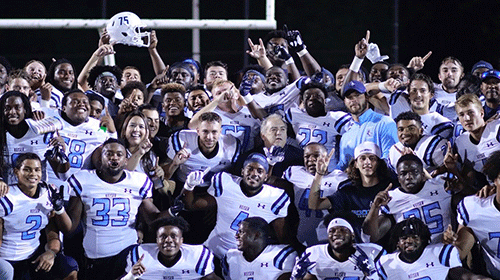 institution, and includes 21 campuses throughout Florida with 20,000 students, 3,800 employees and 66,000 alumni.
institution, and includes 21 campuses throughout Florida with 20,000 students, 3,800 employees and 66,000 alumni. - Started more than 40 years ago, the university’s annual economic impact today is more than $3 billion.
- The university serves the needs of career-focused students by providing over 100 doctoral through associate degrees in workforce shortage areas of Florida’s targeted industries. Programs and majors offered include life sciences such as nursing and physician assistant; information technology and management information systems; logistics and distribution; and defense and homeland security with degrees in cyber forensics and information security.
- About 63 percent of Keiser University graduates annually complete degrees in the STEM and healthcare fields.
- The student body is 70 percent women with an average student age of 27. Most are adult learners who are often parents, working full- or part-time.
- Keiser University partners with more than 1,000 industry leading advisers to bring customized training to students at their jobsites, online, at their Florida campuses and internationally.
- The university is committed to student learning outcomes, and most degree programs require an internship, externship or clinical rotations, providing students valuable hands-on learning in a professional setting.
- Its “students first” philosophy combines soft skills, leadership preparation, financial literacy, student support services and convenient scheduling options for working adults to attend day, evening, and/or a hybrid combination of online classes.
- Helping to combat the projected shortage of registered nurses in Florida in the next decade, Keiser University is the second largest producer of associate of science nursing degree graduates in Florida and sixth in the nation. Its nursing degree program also had the highest number of graduates in the state to pass the national licensing exam in 2017.
- Keiser University has expanded its outreach by offering degree programs at a private residential campus for college-aged students. This 100-acre site provides quality education in a traditional campus setting with student housing and 25 collegiate sports, including a National Association of Intercollegiate Athletics football program that debuted in fall 2018.
Meanwhile, he said Keiser University continues to buck those trends and grow. The school recently celebrated its 40th anniversary and is still expanding and changing.
One of their biggest changes this year has been adding a football team, complete with building a new facility. “It’s been a lot of fun,” Keiser says. “It’s getting us an incredible amount of public relations and attention. It’s our goal to become the college football team of West Palm Beach in Palm Beach County.”
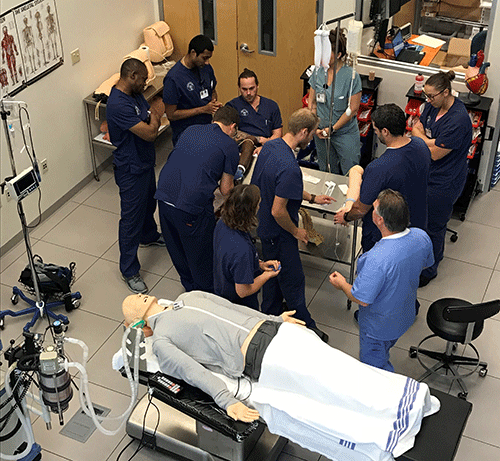 Keiser University also added a campus in Naples for a new program – a master’s of nurse anesthetist and a doctorate nurse anesthetist. “That was our 21st campus,” he said. In addition, Money magazine rated Keiser University the eighth best university in Florida and the school was listed third best online university in America by NICHE.
Keiser University also added a campus in Naples for a new program – a master’s of nurse anesthetist and a doctorate nurse anesthetist. “That was our 21st campus,” he said. In addition, Money magazine rated Keiser University the eighth best university in Florida and the school was listed third best online university in America by NICHE.
Keiser’s advice to others in the sector is twofold, but simple: “Never give up,” he said. “And make sure the students are (always) first.”
ARTHUR KEISER, PH.D., as the Chancellor of Keiser University, oversees and manages all operations at 20 Florida campuses, international campuses, the Online Division, and Graduate School. Under his four decades of leadership, Keiser University – a private, not-for-profit university – has grown into Florida’s second largest independent university and is regionally accredited at Level VI by the Southern Association of Colleges and Schools Commission on Colleges (SACS).
Beginning with just one student and two employees in 1977, Keiser University today offers more than 100 doctoral, master’s, bachelor’s, and associate degrees, has nearly 66,000 alumni, 20,000 students, and employs over 3,800 team members. Dr. Keiser maintains his role at the helm of Keiser University which recently celebrated its 40th year serving the state of Florida with an annual economic impact of $3 billion and 30,000 direct and indirect jobs.
Dr. Keiser has served the higher education community in various capacities on national and state levels. Currently in his third term, he is chairman of the National Advisory Committee on Institutional Quality and Integrity (NACIQI). He has also chaired served as Chairperson of both the Board of Directors of the Association of Private Sector Colleges and Universities (APSCU) and the Accrediting Commission of Career Schools and Colleges of Technology (ACCSCT). Dr. Keiser is a former member of the Jacob K. Javits Fellows Program Fellowship Board and a gubernatorial appointee to the State Board of Independent Colleges and Universities and the State Board of Independent Postsecondary, Vocational, Technical, Trade and Business Schools. Dr. Keiser has also served as President of the Florida Association of Postsecondary Schools and Colleges (FAPSC). He is a former Team Leader for the Accrediting Bureau of Health Education Schools Accrediting Commission and was a member of the Appeals Panel.
As the guest of the Secretary General of China, he presented to foreign educators on the topics of Building International Campuses and Career Education in the United States. Dr. Keiser has led Keiser University’s international growth with campuses in San Marcos, Nicaragua; Shanghai, China; and Eastern Europe.
Contact Information: Dr. Arthur Keiser // Chancellor and CEO // Keiser University // 954-776-4476 // artk@keiseruniversity.edu // https://www.keiseruniversity.edu




